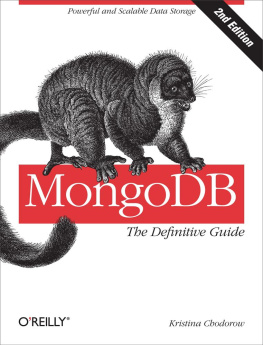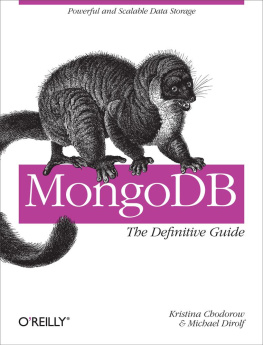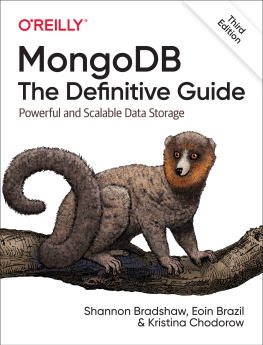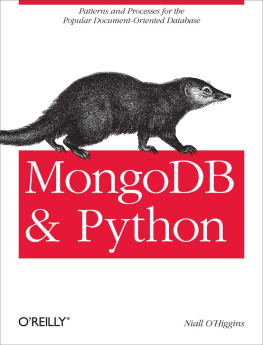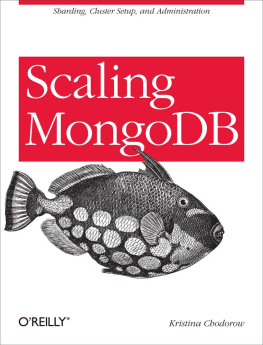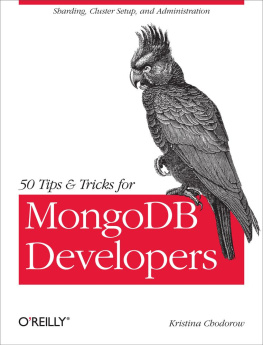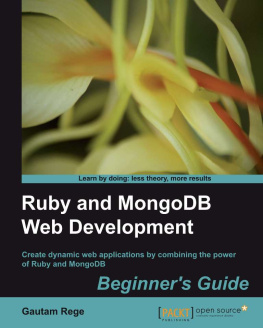Kristina Chodorow - Scaling MongoDB
Here you can read online Kristina Chodorow - Scaling MongoDB full text of the book (entire story) in english for free. Download pdf and epub, get meaning, cover and reviews about this ebook. year: 2011, publisher: OReilly Media, genre: Computer. Description of the work, (preface) as well as reviews are available. Best literature library LitArk.com created for fans of good reading and offers a wide selection of genres:
Romance novel
Science fiction
Adventure
Detective
Science
History
Home and family
Prose
Art
Politics
Computer
Non-fiction
Religion
Business
Children
Humor
Choose a favorite category and find really read worthwhile books. Enjoy immersion in the world of imagination, feel the emotions of the characters or learn something new for yourself, make an fascinating discovery.

- Book:Scaling MongoDB
- Author:
- Publisher:OReilly Media
- Genre:
- Year:2011
- Rating:3 / 5
- Favourites:Add to favourites
- Your mark:
Scaling MongoDB: summary, description and annotation
We offer to read an annotation, description, summary or preface (depends on what the author of the book "Scaling MongoDB" wrote himself). If you haven't found the necessary information about the book — write in the comments, we will try to find it.
Create a MongoDB cluster that will grow to meet the needs of your application. With this short and concise book, youll get guidelines for setting up and using clusters to store a large volume of data, and learn how to access the data efficiently. In the process, youll understand how to make your application work with a distributed database system.
Scaling MongoDB will help you:
- Set up a MongoDB cluster through sharding
- Work with a cluster to query and update data
- Operate, monitor, and backup your cluster
- Plan your application to deal with outages
By following the advice in this book, youll be well on your way to building and running an efficient, predictable distributed system using MongoDB.
Kristina Chodorow: author's other books
Who wrote Scaling MongoDB? Find out the surname, the name of the author of the book and a list of all author's works by series.



